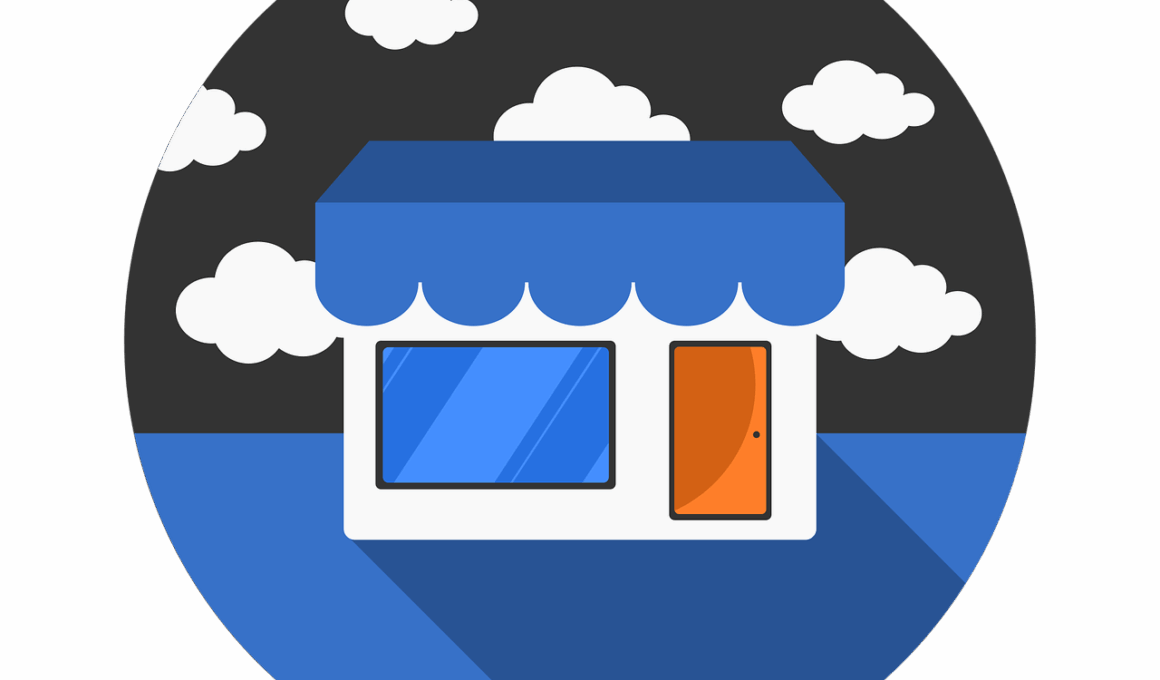How to Choose the Right Marketplace for Your Products
Selecting the right marketplace for your products is crucial for e-commerce success. With the rise of online shopping, numerous marketplaces have emerged, each with unique characteristics and target audiences. The first step in choosing a marketplace involves understanding your target market. Research demographics, shopping habits, and preferences of potential customers. This determination will help you identify the platforms they frequent. Additionally, considering your product type is vital; certain marketplaces may be better suited for specific products. For instance, handmade goods might perform better on Etsy, while electronics could thrive on Amazon. Next, analyze the fees and costs associated with different marketplaces. Each platform has its own fee structure, influencing your profit margins. It is essential to calculate costs for listing, selling, and transaction fees. Furthermore, investigate the marketplace’s marketing and promotional tools. Some platforms offer features like sponsored listings or promotions that could enhance visibility. Lastly, consider how well the marketplace aligns with your brand values and ethical standards. Choosing a reliable marketplace ultimately boosts sales and solidifies customer trust.
Another important factor to deliberate on is the level of competition within the marketplace. Some platforms might be saturated with sellers, making it difficult for new entrants to gain visibility. Analyzing the competition can provide insights into the demand for your products and how you can differentiate from others. Additionally, think about the support and resources available to sellers on the platform. Many marketplaces offer tutorials, customer service, and community forums, which can be incredibly valuable for new sellers. If you lack experience, having access to guidance can significantly improve your chances of success. Another key element to assess is the platform’s payment methods and policies. Diverse payment options can enhance customer satisfaction, while clear refund and return policies can protect both sellers and buyers. Your familiarity with the platform is also important. If you already have experience with a specific marketplace, leveraging that knowledge can lower the learning curve. Researching reviews from current sellers can provide invaluable insights into the platform’s performance, reliability, and seller satisfaction. By examining these key elements thoughtfully, you can make an informed decision that maximizes your e-commerce potential.
Understanding Marketplace Features
When exploring different marketplaces, understanding their features is vital. Each platform comes with unique tools and functionalities designed to support sellers. A clean and user-friendly interface can make a big difference in managing your storefront. An intuitive design simplifies the listing process, allowing you to efficiently showcase products. Moreover, robust analytics tools are essential for evaluating sales performance. Marketplaces that provide comprehensive reports on sales data, traffic, and customer behavior help identify trends. Leveraging analytics can guide inventory decisions, promotional efforts, and overall business strategy. Additionally, consider the marketing features offered by the marketplace. Some platforms allow for targeted advertising, while others offer email marketing tools. Utilizing these options can enhance visibility and drive traffic to your listings. Pay attention to mobile functionality, as an increasing number of consumers shop via mobile devices. Ensure the marketplace is optimized for mobile shopping, which can impact your sales positively. Furthermore, check the integration possibilities with other tools you use, like inventory management systems or accounting software. The right marketplace should support your business needs through its features, ultimately streamlining operations.
Another aspect to consider is the marketplace’s reputation and customer trust. Well-established marketplaces tend to attract more shoppers, as they often come with an inherent level of trust. Review ratings, statistics on buyer protection policies, and overall seller feedback for insights into customer experience. You want to ensure the marketplace you choose has strong safety measures in place, protecting both buyers and sellers. This will not only enhance your sales potential but also safeguard your business’s reputation. Understanding the customer base of the marketplace is equally significant. Different platforms cater to distinct audiences, and aligning your brand with the appropriate audience can yield better results. For example, luxury goods may perform well on exclusive marketplaces but poorly on budget-oriented platforms. Additionally, gauge the marketplace’s growth trends. Is it expanding its reach or facing stagnation? Choosing a growing marketplace creates opportunities for increasing sales over time. Regularly assessing performance metrics and overall growth forecasts can guide your strategies moving forward. Remember, aligning your product offering with the right marketplace’s audience is critical for long-term success.
Leveraging Social Media Integration
Social media integration is another critical factor when selecting a marketplace. Many e-commerce platforms now offer seamless integrations with social media channels, providing sellers the opportunity to enhance their online presence. By linking your store to social media, you can drive traffic and promote products more effectively. Consider leveraging platforms like Instagram and Facebook, where visually driven content can attract customers. Utilize marketplace capabilities for direct selling via social media, which can simplify the purchasing process. Additionally, assess the possibilities to engage with customers through social media marketing. Some marketplaces provide tools to connect with your audience, enabling you to run promotions and showcase new products. Active engagement can lead to higher conversion rates and repeat purchases. Investigate the target audience of the marketplace, as some may align more closely with your social media following. Furthermore, think about the content strategy you’ll adopt for effective promotion. High-quality visuals, compelling copy, and strategic tagging can significantly boost visibility. Ensuring that your marketing aligns with the marketplace’s branding is essential for consistency and reinforces your brand image.
As you firm up your choice of marketplace, consider how well the platform supports customer engagement and feedback. A marketplace that fosters interaction can build a community around your brand, promoting customer loyalty and retention. Features such as Q&A sections, customer reviews, and feedback mechanisms help create a more personal shopping experience. Check how the marketplace manages customer service and dispute resolution. Exceptional support services can greatly enhance buyer confidence, impacting overall sales. It’s also useful to explore promotional options available on the platform. Some marketplaces allow sellers to run discounts, promotions, or flash sales. Taking advantage of these offers can create urgency and drive traffic to your listings. Furthermore, evaluate the shipping and fulfillment options provided by the marketplace. Efficient shipping services can improve customer satisfaction, influencing positive reviews and repeat purchases. As you explore your options, factor in international selling capabilities. If you see potential in global markets, ensure the marketplace supports international shipping. By combining these elements, you can choose a marketplace that aligns with your business goals and supports long-term growth.
Final Considerations for Marketplace Selection
After assessing all the pertinent factors about different marketplaces, it’s essential to have a clear plan for selection. Begin by listing the features that matter most to your specific business model, such as fees, target audience, and product compatibility. Refer to your earlier research to weigh each marketplace based on these criteria. Additionally, consider a phased approach to entering marketplaces. You might choose one or two primary platforms to start, allowing for manageable growth and focus. This method will help you understand how different marketplaces impact your sales and whether any adjustments are necessary moving forward. Keep in mind that entering multiple marketplaces may require more resources and management efforts. Therefore, prioritize your time and financial investment wisely. Regularly evaluate your performance on the selected platforms, monitoring sales, customer interactions, and overall functionality. Don’t hesitate to seek feedback after launching your products. Customer insights can greatly enhance your success and retention rates. Remember, the marketplace you choose should align with your overall business strategy, promoting sustainable growth and profitability in the long term.
In conclusion, choosing the right marketplace requires thoughtful consideration of several factors. Each marketplace offers unique advantages and challenges, and understanding these will empower you in the e-commerce space. Take the time to research thoroughly, analyze marketplace features, evaluate competition, and consider your product alignment. Remember that successful selling goes beyond merely listing products; it’s about curating the right experience for your customer. Engage actively with your audience through social media and leverage marketplace tools that facilitate interaction and community building. By prioritizing your customers and providing excellent service, you can foster loyalty, further boosting your sales potential. Additionally, ensure that your selected marketplace resonates with your brand values and image, presenting a cohesive identity to your audience. Adapting and refining your approach over time will keep your business relevant and competitive. Lastly, stay informed on evolving marketplace trends and shifts in consumer behavior, as this knowledge will facilitate prompt adjustments. Your effort spent on choosing the right marketplace can truly make a significant difference. With this strategic approach, you’re now better equipped to thrive in the vast landscape of e-commerce marketplaces.


